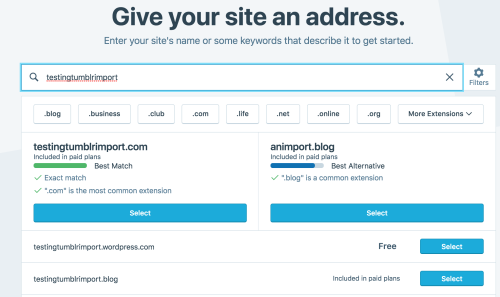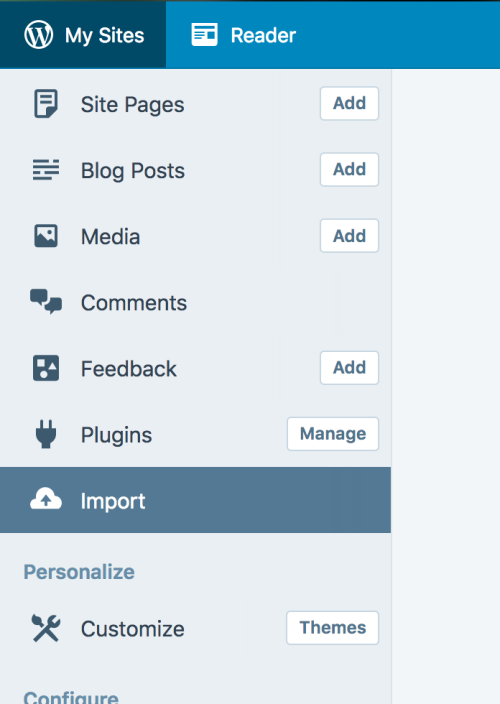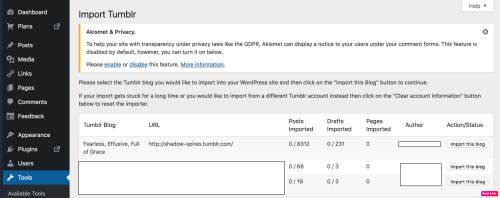It has been 50 years since Noam Chomsky first became a major public figure in the United States, after publishing his essay “The Responsibility of Intellectuals,” which argued that American academics had failed in their core duty to responsibly inquire into truth. Over the past five decades, he has paradoxically been both one of the most well-known and influential thinkers in the world and almost completely absent from mainstream U.S. media.
 Nobody has been more influential on my own intellectual development than Chomsky. But I recently realized that what I’ve learned from Chomsky’s work has had almost nothing to do with the subjects he is most known for writing about: linguistics, U.S. foreign policy, and Israel. Instead, where I feel Chomsky’s influence most strongly is in a particular kind of approach to thinking and writing about political, social, and moral questions. In other words, it’s not so much his conclusions as his method (though I also share most of his conclusions). From Chomsky’s writing and talks, I have drawn an underlying set of values and principles that I have found very useful. And I think it’s easy to miss those underlying values, because his books often either consist of technical discussions of the human language faculty or long and fact-heavy indictments of United States government policy. So I’d like to go through and explain what I’ve learned and why I think it’s important. The lessons I’ve learned from Chomsky have encouraged me to be more rational, compassionate, consistent, skeptical, and curious. Nearly everything I write is at least in part a restatement or application of something I picked up from Noam Chomsky, and it feels only fair to acknowledge the source.
Nobody has been more influential on my own intellectual development than Chomsky. But I recently realized that what I’ve learned from Chomsky’s work has had almost nothing to do with the subjects he is most known for writing about: linguistics, U.S. foreign policy, and Israel. Instead, where I feel Chomsky’s influence most strongly is in a particular kind of approach to thinking and writing about political, social, and moral questions. In other words, it’s not so much his conclusions as his method (though I also share most of his conclusions). From Chomsky’s writing and talks, I have drawn an underlying set of values and principles that I have found very useful. And I think it’s easy to miss those underlying values, because his books often either consist of technical discussions of the human language faculty or long and fact-heavy indictments of United States government policy. So I’d like to go through and explain what I’ve learned and why I think it’s important. The lessons I’ve learned from Chomsky have encouraged me to be more rational, compassionate, consistent, skeptical, and curious. Nearly everything I write is at least in part a restatement or application of something I picked up from Noam Chomsky, and it feels only fair to acknowledge the source.
Libertarian Socialism
In the United States, “libertarianism” is associated with the right and “socialism” with the left. The libertarians value “freedom” (or what they call freedom) while the socialists value “equality.” And many people accept this distinction as fair: After all, the right wants smaller government while the left wants a big redistributionist government. Even many leftists implicitly accept this “freedom versus equality” distinction as fair, suggesting that while freedom may be nice, fairness is more important.
Libertarian socialism, the political tradition in which Noam Chomsky operates, which is closely tied to anarchism, rejects this distinction as illusory. If the word “libertarianism” is taken to mean “a belief in freedom” and the word “socialism” is taken to mean “a belief in fairness,” then the two are not just “not opposites,” but they are necessary complements. That’s because if you have “freedom” from government intervention, but you don’t have a fair economy, your freedom becomes meaningless, because you will still be faced with a choice between working and starving. Freedom is only meaningful to the extent that it actually creates a capacity for you to act. If you’re poor, you don’t have much of an actual capacity to do much, so you’re not terribly free. Likewise, “socialism” without a conception of freedom is not actually fair and equal. Libertarian socialists have always been critical of Marxist states, because the libertarian socialist recognizes that “equality” enforced by a brutal and repressive state is not just “un-free,” but is also unequal, because there is a huge imbalance of power between the people and the state. The Soviet Union was obviously not free, but it was also not socialist, because “the people” didn’t actually control anything; the state did.
The libertarian socialist perspective is well-captured by a quote from the pioneering anarchist Mikhail Bakunin: “Liberty without socialism is privilege and injustice; socialism without liberty is slavery and brutality.” During the 1860s and ’70s, 50 years before the Soviet Union, Bakunin warned that Marxist socialism’s authoritarian currents would lead to hideous repression. In a Marxist regime, he said:
There will be a new class, a new hierarchy of real and pretended scientists and scholars, and the world will be divided into a minority ruling in the name of knowledge and an immense ignorant majority. And then, woe betide the mass of ignorant ones!… You can see quite well that behind all the democratic and socialistic phrases and promises of Marx’s program, there is to be found in his State all that constitutes the true despotic and brutal nature of all States.
This, as we know, is precisely what happened. Unfortunately, however, the bloody history of 20th century Marxism-Leninism has convinced many people that socialism itself is discredited. They miss the voices of people in the libertarian socialist tradition, like Bakunin, Peter Kropotkin, and Noam Chomsky, who have always stood for a kind of socialism that places a core value on freedom and deplores authoritarianism. It emphasizes true democracy; that is, people should get to participate in the decisions that affect their lives, whether those decisions are labeled “political” or “economic.” It detests capitalism because capitalist institutions are totalitarian (you don’t get to vote for who your boss is, and you get very little say in what your company does), but it also believes strongly in freedom of expression and civil liberties.
Libertarian socialism seems to me a beautiful philosophy. It rejects both “misery through economic exploitation” and “misery through Stalinist totalitarianism,” arguing that the problem is misery itself, whatever the source. It’s a very simple concept, but it’s easy to miss because of the binary that pits “communism” against “capitalism.” Thus, if you’re a critic of capitalism, you must be an apologist for the most brutal socialist governments. But every time there has been such government, libertarian socialist critics have been the first to call it out for its hypocrisy. (Usually, such people are the first ones liquidated.) But the libertarian tradition in socialism is precious. And Chomsky, skeptical of corporate and governmental power alike, is our foremost public exponent of it. See: Chomsky on Libertarian Socialism.
Pragmatic Utopianism
The problem with utopians is that they’re not practical, and the problem with pragmatists is that they often lack vision. If you dream of elaborate perfect societies, but you don’t remain anchored in real-world realities and have a sense of how to get things done, all of your dreams are useless and you may even end up destroying the progress you have already made for the sake of an ideal you’ll never reach. But if you don’t have a strong sense of what the ultimate long-term goal is, you’re not going to know whether you’re moving closer to it or not.
Chomsky’s approach to “political reality” seems to me a good balance of both radicalism and pragmatism. He is an anarchist in his strong skepticism of authority, and a utopian in his belief that the ideal world is a world without social class or unjust hierachies of any kind, a world without war or economic deprivation. But he is also deeply conscious of the realities of the world we live in and the need for those who care about moving towards this utopia to be willing to take small steps rather than just wait for a “revolution.”
Consider Chomsky’s approach to voting. Chomsky believes simultaneously that (1) voting is not a very important part of politics, because it doesn’t change much thanks to the combination of the typically awful candidates and the low impact of a single vote and (2) you should still vote, and if you live in swing state, you should vote for the Democratic candidate for president. He is radical in that he believes we need far broader political action than simply voting once every few years for the least-worst of two major party candidates, but practical in that he also believes that it’s better if Democrats get into office than Republicans. Chomsky understands that you can simultaneously work to save ObamaCare and believe that it’s a pitiful substitute for a genuine health-care guarantee, and we need much more radical change. See: Chomsky on Voting and Democrats. (...)
The Consistent Application of Moral Standards
One of Chomsky’s simplest principles is among the most difficult to apply in practice: You should judge yourself by the same moral standards that you judge others by. This has formed the core of his critique of U.S. foreign policy, and yet it is often insufficiently appreciated even by those that embrace his conclusions. Many people think that Chomsky is uniquely “anti-American.” In fact, his criticisms of the United States are so strong largely because when this elementary moral principle is applied to the facts, the conclusion is inevitably deeply damning. It simply turns out that if you judge the United States by the standard that it uses to judge other people, the United States does not look very good. If you take the facts of, say, the U.S. bombing of Laos(where the United States secretly dropped 2.5 million tons of bombs in the ’60s and ’70s, massacring and maiming thousands of peaceable villagers, 20,000 of whom were killed or injured in the decades after the bombing when unexploded bombs went off), and you imagine how it would appear to us if the roles had been reversed and Laos had been bombing the United States, you begin to see just how inconsistent we are in our evaluations of our own actions versus the actions of others. 500,000 people died in the Iraq War. If Iraq had invaded the United States and 500,000 people died (actually, the proportional population equivalent would be closer to 5,000,000), would there be any way that anybody in the country could conceive of Iraq as a “force for good” in the world in the way that the U.S. believes people should think we are? It’s laughable. If Vietnam had invaded the United States the way the United States had invaded Vietnam, could such an act ever be considered justified?
This idea of moral consistency, of trying to treat like behaviors alike, is the simplest possible notion in the world. It’s so elementary that it sounds childish to even pose the questions. And yet the power of latent patriotic sentiment is so great that it makes a clear-eyed and fair assessment incredibly difficult. It’s hard to see the world through other people’s eyes, to see what our self-justifications look like to those who are on the receiving end of our actions. And when we do it, it’s deeply discomforting. But this is the foundation of Chomsky’s critique: It’s not enough to have “values” (e.g., “terrorism is bad”), you must apply those values consistently (i.e., if something would constitute terrorism if done against us, it must constitute terrorism if it is done by us). Chomsky is seen as being “anti-American” for pointing out that if the Nuremberg principles were applied consistently, essentially every postwar U.S. president would have to be hanged. But this is just a result of the application of consistency: The crime of “aggressive war” that was so forcefully condemned at Nuremberg has been committed repeatedly by the U.S.
In both linguistics and politics, Chomsky often uses his famous “Martian coming to Earth” example: Try to imagine what our planetary affairs would look like to someone who was not part of one of the particular human societies, but was separate from them and able to see their commonalities. They would perceive the similarities between human languages, rather than the differences, and they would see the bizarre ways in which each country perceives its own acts as right and everybody else’s as wrong, even when the same acts are being committed.
The principle of treating all human beings consistently has an incredible power to illuminate, because it helps us clarify what our values actually are and make sure we are following them. But it also helps us become true “universalists,” in the sense that we can begin to view things from a human perspective rather than a nationalistic perspective.
 Nobody has been more influential on my own intellectual development than Chomsky. But I recently realized that what I’ve learned from Chomsky’s work has had almost nothing to do with the subjects he is most known for writing about: linguistics, U.S. foreign policy, and Israel. Instead, where I feel Chomsky’s influence most strongly is in a particular kind of approach to thinking and writing about political, social, and moral questions. In other words, it’s not so much his conclusions as his method (though I also share most of his conclusions). From Chomsky’s writing and talks, I have drawn an underlying set of values and principles that I have found very useful. And I think it’s easy to miss those underlying values, because his books often either consist of technical discussions of the human language faculty or long and fact-heavy indictments of United States government policy. So I’d like to go through and explain what I’ve learned and why I think it’s important. The lessons I’ve learned from Chomsky have encouraged me to be more rational, compassionate, consistent, skeptical, and curious. Nearly everything I write is at least in part a restatement or application of something I picked up from Noam Chomsky, and it feels only fair to acknowledge the source.
Nobody has been more influential on my own intellectual development than Chomsky. But I recently realized that what I’ve learned from Chomsky’s work has had almost nothing to do with the subjects he is most known for writing about: linguistics, U.S. foreign policy, and Israel. Instead, where I feel Chomsky’s influence most strongly is in a particular kind of approach to thinking and writing about political, social, and moral questions. In other words, it’s not so much his conclusions as his method (though I also share most of his conclusions). From Chomsky’s writing and talks, I have drawn an underlying set of values and principles that I have found very useful. And I think it’s easy to miss those underlying values, because his books often either consist of technical discussions of the human language faculty or long and fact-heavy indictments of United States government policy. So I’d like to go through and explain what I’ve learned and why I think it’s important. The lessons I’ve learned from Chomsky have encouraged me to be more rational, compassionate, consistent, skeptical, and curious. Nearly everything I write is at least in part a restatement or application of something I picked up from Noam Chomsky, and it feels only fair to acknowledge the source.Libertarian Socialism
In the United States, “libertarianism” is associated with the right and “socialism” with the left. The libertarians value “freedom” (or what they call freedom) while the socialists value “equality.” And many people accept this distinction as fair: After all, the right wants smaller government while the left wants a big redistributionist government. Even many leftists implicitly accept this “freedom versus equality” distinction as fair, suggesting that while freedom may be nice, fairness is more important.
Libertarian socialism, the political tradition in which Noam Chomsky operates, which is closely tied to anarchism, rejects this distinction as illusory. If the word “libertarianism” is taken to mean “a belief in freedom” and the word “socialism” is taken to mean “a belief in fairness,” then the two are not just “not opposites,” but they are necessary complements. That’s because if you have “freedom” from government intervention, but you don’t have a fair economy, your freedom becomes meaningless, because you will still be faced with a choice between working and starving. Freedom is only meaningful to the extent that it actually creates a capacity for you to act. If you’re poor, you don’t have much of an actual capacity to do much, so you’re not terribly free. Likewise, “socialism” without a conception of freedom is not actually fair and equal. Libertarian socialists have always been critical of Marxist states, because the libertarian socialist recognizes that “equality” enforced by a brutal and repressive state is not just “un-free,” but is also unequal, because there is a huge imbalance of power between the people and the state. The Soviet Union was obviously not free, but it was also not socialist, because “the people” didn’t actually control anything; the state did.
The libertarian socialist perspective is well-captured by a quote from the pioneering anarchist Mikhail Bakunin: “Liberty without socialism is privilege and injustice; socialism without liberty is slavery and brutality.” During the 1860s and ’70s, 50 years before the Soviet Union, Bakunin warned that Marxist socialism’s authoritarian currents would lead to hideous repression. In a Marxist regime, he said:
There will be a new class, a new hierarchy of real and pretended scientists and scholars, and the world will be divided into a minority ruling in the name of knowledge and an immense ignorant majority. And then, woe betide the mass of ignorant ones!… You can see quite well that behind all the democratic and socialistic phrases and promises of Marx’s program, there is to be found in his State all that constitutes the true despotic and brutal nature of all States.
This, as we know, is precisely what happened. Unfortunately, however, the bloody history of 20th century Marxism-Leninism has convinced many people that socialism itself is discredited. They miss the voices of people in the libertarian socialist tradition, like Bakunin, Peter Kropotkin, and Noam Chomsky, who have always stood for a kind of socialism that places a core value on freedom and deplores authoritarianism. It emphasizes true democracy; that is, people should get to participate in the decisions that affect their lives, whether those decisions are labeled “political” or “economic.” It detests capitalism because capitalist institutions are totalitarian (you don’t get to vote for who your boss is, and you get very little say in what your company does), but it also believes strongly in freedom of expression and civil liberties.
Libertarian socialism seems to me a beautiful philosophy. It rejects both “misery through economic exploitation” and “misery through Stalinist totalitarianism,” arguing that the problem is misery itself, whatever the source. It’s a very simple concept, but it’s easy to miss because of the binary that pits “communism” against “capitalism.” Thus, if you’re a critic of capitalism, you must be an apologist for the most brutal socialist governments. But every time there has been such government, libertarian socialist critics have been the first to call it out for its hypocrisy. (Usually, such people are the first ones liquidated.) But the libertarian tradition in socialism is precious. And Chomsky, skeptical of corporate and governmental power alike, is our foremost public exponent of it. See: Chomsky on Libertarian Socialism.
Pragmatic Utopianism
The problem with utopians is that they’re not practical, and the problem with pragmatists is that they often lack vision. If you dream of elaborate perfect societies, but you don’t remain anchored in real-world realities and have a sense of how to get things done, all of your dreams are useless and you may even end up destroying the progress you have already made for the sake of an ideal you’ll never reach. But if you don’t have a strong sense of what the ultimate long-term goal is, you’re not going to know whether you’re moving closer to it or not.
Chomsky’s approach to “political reality” seems to me a good balance of both radicalism and pragmatism. He is an anarchist in his strong skepticism of authority, and a utopian in his belief that the ideal world is a world without social class or unjust hierachies of any kind, a world without war or economic deprivation. But he is also deeply conscious of the realities of the world we live in and the need for those who care about moving towards this utopia to be willing to take small steps rather than just wait for a “revolution.”
Consider Chomsky’s approach to voting. Chomsky believes simultaneously that (1) voting is not a very important part of politics, because it doesn’t change much thanks to the combination of the typically awful candidates and the low impact of a single vote and (2) you should still vote, and if you live in swing state, you should vote for the Democratic candidate for president. He is radical in that he believes we need far broader political action than simply voting once every few years for the least-worst of two major party candidates, but practical in that he also believes that it’s better if Democrats get into office than Republicans. Chomsky understands that you can simultaneously work to save ObamaCare and believe that it’s a pitiful substitute for a genuine health-care guarantee, and we need much more radical change. See: Chomsky on Voting and Democrats. (...)
The Consistent Application of Moral Standards
One of Chomsky’s simplest principles is among the most difficult to apply in practice: You should judge yourself by the same moral standards that you judge others by. This has formed the core of his critique of U.S. foreign policy, and yet it is often insufficiently appreciated even by those that embrace his conclusions. Many people think that Chomsky is uniquely “anti-American.” In fact, his criticisms of the United States are so strong largely because when this elementary moral principle is applied to the facts, the conclusion is inevitably deeply damning. It simply turns out that if you judge the United States by the standard that it uses to judge other people, the United States does not look very good. If you take the facts of, say, the U.S. bombing of Laos(where the United States secretly dropped 2.5 million tons of bombs in the ’60s and ’70s, massacring and maiming thousands of peaceable villagers, 20,000 of whom were killed or injured in the decades after the bombing when unexploded bombs went off), and you imagine how it would appear to us if the roles had been reversed and Laos had been bombing the United States, you begin to see just how inconsistent we are in our evaluations of our own actions versus the actions of others. 500,000 people died in the Iraq War. If Iraq had invaded the United States and 500,000 people died (actually, the proportional population equivalent would be closer to 5,000,000), would there be any way that anybody in the country could conceive of Iraq as a “force for good” in the world in the way that the U.S. believes people should think we are? It’s laughable. If Vietnam had invaded the United States the way the United States had invaded Vietnam, could such an act ever be considered justified?
This idea of moral consistency, of trying to treat like behaviors alike, is the simplest possible notion in the world. It’s so elementary that it sounds childish to even pose the questions. And yet the power of latent patriotic sentiment is so great that it makes a clear-eyed and fair assessment incredibly difficult. It’s hard to see the world through other people’s eyes, to see what our self-justifications look like to those who are on the receiving end of our actions. And when we do it, it’s deeply discomforting. But this is the foundation of Chomsky’s critique: It’s not enough to have “values” (e.g., “terrorism is bad”), you must apply those values consistently (i.e., if something would constitute terrorism if done against us, it must constitute terrorism if it is done by us). Chomsky is seen as being “anti-American” for pointing out that if the Nuremberg principles were applied consistently, essentially every postwar U.S. president would have to be hanged. But this is just a result of the application of consistency: The crime of “aggressive war” that was so forcefully condemned at Nuremberg has been committed repeatedly by the U.S.
In both linguistics and politics, Chomsky often uses his famous “Martian coming to Earth” example: Try to imagine what our planetary affairs would look like to someone who was not part of one of the particular human societies, but was separate from them and able to see their commonalities. They would perceive the similarities between human languages, rather than the differences, and they would see the bizarre ways in which each country perceives its own acts as right and everybody else’s as wrong, even when the same acts are being committed.
The principle of treating all human beings consistently has an incredible power to illuminate, because it helps us clarify what our values actually are and make sure we are following them. But it also helps us become true “universalists,” in the sense that we can begin to view things from a human perspective rather than a nationalistic perspective.
by Nathan J. Robinson, Current Affairs | Read more:
Image: uncredited
[ed. See also: Noam Chomsky at 90: On Orwell, Taxi Drivers, and Rejecting Indoctrination.]
























